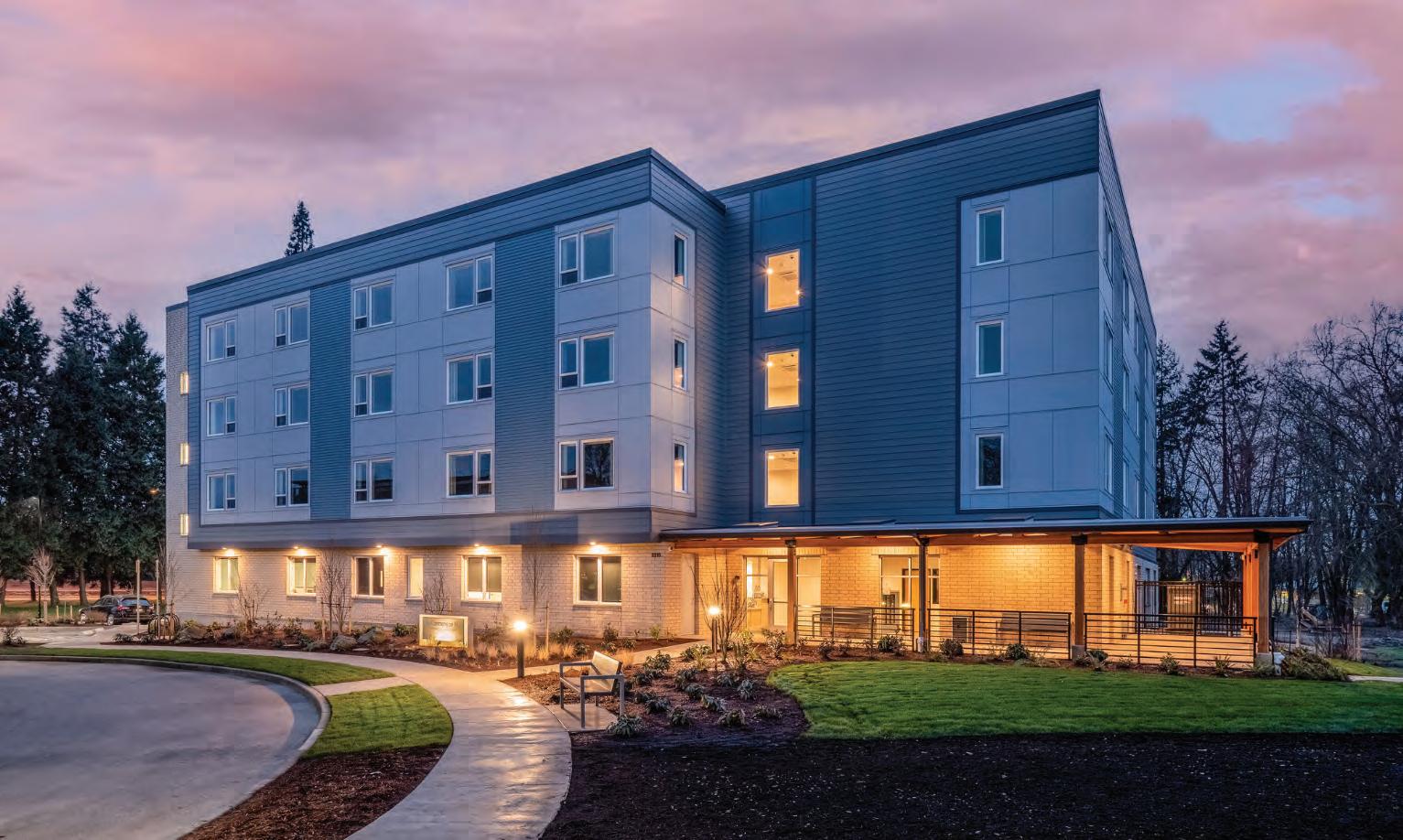
4 minute read
Strategic Plan for Lane County & Housing & Community Development
2022 – 2024 Lane County Strategic Plan (Three-Year Plan)




Vision
Lane County is the best county in which all can live, work, and play.
Mission
We responsibly manage available resources to deliver vital, community-centered services with passion, drive and focus.
Core Behaviors
Passion to serve Driven to connect Focused on solutions
Purpose
To Improve Lives
Strategic Lenses
Stewardship of Resources
Equity
Collective Impact
Values
Integrity
Excellence
Equity and Respect
Purpose of the Strategic Plan
A strategic plan is a living document that defines the organization’s reason for being. It establishes a clear and compelling vision. It sets measurable objectives, and, most importantly, lays out the desired impact on and value-add to the entire community – residents, businesses, employees, and other stakeholders. It helps set direction and focus and assists in aligning resources to accomplish strategic objectives. A strategic plan is not intended to provide a comprehensive overview of all of the essential programs, services, initiatives, partnerships and investments that Lane County makes throughout our communities.
The strategic plan serves as Lane County’s roadmap, or North Star, so everyone within the organization and the community understands the intended direction of the County. Having a clear, concrete strategic direction also helps to keep the County on track and focused on what’s important when challenges, setbacks and unanticipated events occur and it ensures decisions, policies, plans, programs and processes are designed through the strategic lenses of stewardship of resources, equity, and collective impact.
Strategic Lenses
Strategic lenses are perspectives from which strategic priorities and goals should be viewed, as well as questions that should be asked before strategies are implemented. These perspectives or questions include: How will we pay for this? Is what we are proposing sustainable? How does this impact everyone in our community? Have we sought feedback from key stakeholders? Are we including the right partners? Is this the most effective solution?
Identifying strategic lenses ensures Lane County has a thoughtful, consistent and intentional process for evaluating strategies before implementation. Based on feedback from the Board of Commissioners, executive leadership, employees and residents, we have identified the following three strategic lenses:
• Stewardship of Resources
• Equity
• Collective Impact
Stewardship of Resources Lens
This lens addresses both the financial and sustainability aspect of resources. Stewardship of Resources is the prudent and transparent management of public funds and resources - meeting the needs of the present without compromising the ability of future generations. The use of analytical tools in decision-making processes determines how the County should best maintain, spend and invest its available resources. This strategic lens also helps the County balance economic, environmental, and social needs.

Equity Lens
Equity is when everyone has access to the opportunities, tools and supports necessary to satisfy essential needs, advance their well-being, and achieve their full potential. Lane County is committed to ensuring people have access to the information and supports that they need – regardless of age, education, ethnicity, language, income, physical limitations, or geographic barriers – to achieve health, safety, education, and economic stability.
Collective Impact Lens
Collective Impact is the commitment of a group of stakeholders and partners from different sectors to a common agenda for solving complex community problems. The five key elements are to: 1) have a common agenda, 2) develop shared measurements, 3) engage in mutually reinforcing activities, 4) maintain open and continuous communications, and 5) establish clear roles and structure to operate effectively. The County uses collective impact to shape its partnerships and services.
Strategic Goal
Develop
Objectives
A Focus on people at the intersection of behavioral health, homelessness, and public safety to provide crisis/stabilization support and treatment.
1) Gain the perspective from people with the highest needs and highest users of the system to make sure the system is serving their needs.
2) Continue to engage with community partners to share resources, problem solve and build support for next steps.
3) Complete a funding plan for a community behavioral health crisis/stabilization center in partnership with community organizations.
4) Identify a site and start construction of a community behavioral health crisis/stabilization center in partnership with community organizations.
B Invest in public safety for improved service delivery

1) Accomplish phase two of the Lane County Community Public Safety Repair Plan.
2) Actively pursue a renewal of the 5-Year Public Safety Levy which ends May 2023.
3) Advocate at the state and federal level for sustained funding for our critical public safety services.
C Invest in our juvenile justice programs and adult supervision services and unite them as one department to allow our employees to thrive and provide excellent community service.

1) Continue to plan for and actively work with employees to determine the next steps to create the new department through the use of an equity lens.
2) Understand and work to address the racial disparities in both the adult and juvenile justice systems.
D Reduce the length of time people experience homelessness by adopting best practices and strategies.
1) Invest in at least two more Permanent Supportive Housing facilities.
2) Support operations of the navigation center
3) Increase cross -departmental, cross-divisional alignment of resources as well as partner agency involvement.
E Focus on health promotion by providing equitable access to primary, behavioral, and dental health care and comprehensive, evidence -based prevention strategies across the life span.
1) Secure funding to expand services in our rural communities starting with the South Lane Community Health Center.
2) Increase mobile outreach, engagement, and access with our most marginalized populations to increase their overall well-being
F Launch Community Partnerships Program to build capacity to support pandemic recovery and achieve health equity in communities.
1) Strengthen partnerships with culturally-specific community-based organizations to build capacity for communitycentered interventions.
2) Collaborate with communities to develop data use approaches that include community strengths and the root drivers of social inequity.
G Establish a traffic safety presence in combination with engineering and education to reduce traffic fatalities.
1) Support and Implement the Transportation Safety Action Plan.
Draft Performance Measures
• <X% homelessness recidivism

• X% reduction in first time homeless
• Number of deputies per 1,000 population
• Response Time for Calls of Service for Assaults and Domestic Violence Calls
• Adult reconviction rates by race and ethnicity trended over time (set baseline and then set performance target for rates of reduction)
• X% year-over-year decrease in vehicular-related personal injury and fatal crashes
• Evaluate traffic safety, pavement condition and programs that improve the safety and condition of the transportation network







